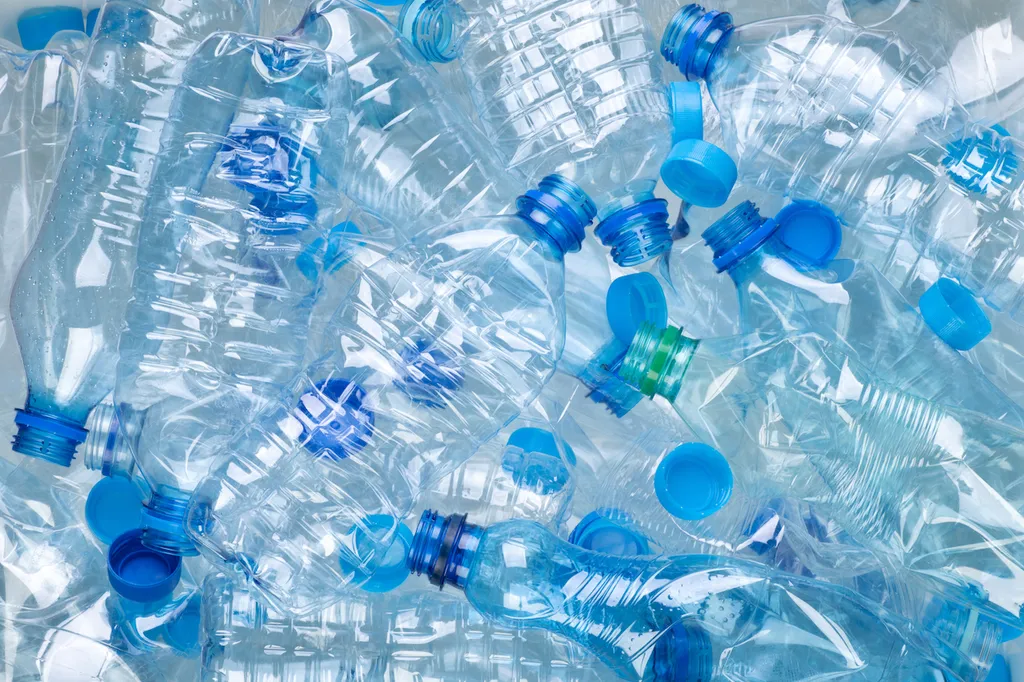Scientists convert plastic waste into vanilla flavoring
과학자들은 플라스틱 쓰레기를 바닐라 향료로 바꾸다.
By Yasemin Saplakoglu - Staff Writer about 3 hours ago
약 3시간 전 전속 작가 - 야스민 사플라코글루에 의한 글
In the future, your vanilla ice cream may be made from plastic bottles.
장차, 여러분의 바닐라 아이스크림은 플라스틱 병으로
만들어질지도 모른다.

(Image credit: Shutterstock)
(이미지 저작권: 셔터스탁)
In the future, your vanilla ice cream may be made from plastic bottles. Scientists have figured out a way to convert plastic waste into vanilla flavoring with genetically engineered bacteria, according to a new study.
장차, 여러분의 바닐라 아이스크림은 플라스틱 병으로
만들어질지도 모른다.
새로운 연구에 따르면, 과학자들은 플라스틱 쓰레기를
유전적으로 변형된 박테리아를 사용하여 바닐라 향으로
바꾸는 방법을 알아냈다,고 한다.
Vanillin, the compound that carries most of the smell and taste of vanilla, can be extracted naturally from vanilla beans or made synthetically. About 85% of vanillin is currently made from chemicals taken from fossil fuels, according to The Guardian.
바닐라의 냄새와 맛의 대부분을 운반하는 화합물질인
바닐린은 바닐라 열매에서 자연스럽게 추출되거나
합성적으로 만들어질 수 있다.
가디언지에 따르면, 바닐린의 약 85%는 현재 화석 연료에서
추출된 화학 물질로 만들어졌다,고 한다.
Vanillin is found in a wide variety of food, cosmetic, pharmaceutical, cleaning and herbicide products, and the demand is "growing rapidly," the authors wrote in the study. In 2018, the global demand for vanillin was about 40,800 tons (37,000 metric tons), and it's expected to grow to 65,000 tons (59,000 metric tons) by 2025, according to the study, published June 10 in the journal Green Chemistry.
바닐린은 다양한 음식, 화장품, 제약, 세척 및 제초제
제품에서 발견되고, 그리고 그 수요는 "급증하고 있다",
고 저자들은 논문에서 썼다.
6월 10일 저널 그린 케미스트리(Green Chemistry)에
게재된 그 논문에 따르면, 2018년도에 바닐린의 전
세계 수요는 약 40,800톤(37,000 미터 톤)이었고,
2025년까지는 65,000톤(59,000 미터 톤)까지 증가할
것으로 예상된다.
Related: Plastic legacy: Humankind's trash is now a new rock
관련내용:
플라스틱 유산: 인류의 쓰레기가 이제 새로운 바위로 되었다.
The demand for vanillin "far exceeds" the vanilla bean supply, so scientists have resorted to synthetically producing vanillin. For the new study, researchers used a novel method to convert plastic waste into vanillin, as a way to both supply vanillin and reduce plastic pollution.
바닐린에 대한 수요는 바닐라 콩 공급을 "훨씬 초과하게
되고", 그래서 과학자들은 합성적으로 바닐린을 생산하는
데 의존해왔다.
새로운 연구에 대한 것으로, 연구원들은 바닐린을 공급
하고 플라스틱 오염을 줄이기 위한 방법으로 플라스틱
쓰레기를 바닐린으로 바꾸기 위한 새로운 방법을 사용
했다.
Previous studies showed how to break down plastic bottles made from polyethylene terephthalate into its basic subunit, known as terephthalic acid. In the new study, two researchers at The University of Edinburgh in Scotland genetically engineered E. coli bacteria to convert terephthalic acid into vanillin. Terephthalic acid and vanillin have very similar chemical compositions and the engineered bacteria only needs to make minor changes to the number of hydrogens and oxygens that are bonded to the same carbon backbone.
예전의 논문에서, 폴리에틸렌 테레프탈레이트로부터
만들어진 플라스틱 병을 테레프탈산으로 알려진 그것의
기본적인 하위 단위로 분해하는 방법을 보여주었다.
새로운 논문에서는, 스코틀랜드 에든버러 대학의 두 명의
연구원이 테레프탈산을 바닐린으로 바꾸기 위해 대장균을
유전공학으로 만들었다.
테레프탈산과 바닐린은 매우 유사한 화학 성분을 지니며,
그리고 공학적 박테리아는 동일한 탄소 백본에 결합된
수소와 산소의 수를 약간 변경해 주는 것을 필요로 한다.
The researchers mingled their genetically engineered bacteria with terephthalic acid and kept them at 98.6 degrees Fahrenheit (37 degree Celsius) for a day, according to The Guardian. About 79% of the terephthalic acid subsequently converted into vanillin.
가디언지에 따르면, 연구원들은 유전자 변경 박테리아와 테레프
탈산을 혼합하여 하루 동안 화씨 98.6도에 보존했다.
테레프탈산의 약 79%가 연속적으로 바닐린으로 변환되었다.
"The global plastic waste crisis is now recognized as one of the most pressing environmental issues facing our planet," the authors wrote in the study. About 1 million plastic bottles are sold every minute around the world, and only 14% are recycled, according to The Guardian. Those that are recycled can only be turned into fibers for clothing or carpets.
"세계적인 플라스틱 폐기물 위기는 현재 우리 지구가 직면하고
있는 가장 시급한 환경 문제 중 하나로 인식되고 있습니다,"
라고 저자들은 논문에서 썼다.
약 1백만개의 플라스틱 병이 전세계에서 매 분마다 팔리고 14%
만이 재활용된다.
가디언지에 따르면, 재활용된 것들은 옷이나 카펫을 위한 섬유
로만 바뀔 수 있다.
"Our work challenges the perception of plastic being a problematic waste and instead demonstrates its use as a new carbon resource from which high-value products can be made," co-author Stephen Wallace, a senior lecturer in biotechnology at The University of Edinburgh, told The Guardian.
"저희 작업은 플라스틱이 문제 있는 폐기물이라는 인식에 도전
하고 있으며, 그 대신 고부가가치 제품을 생산할 수 있는 새로운
탄소 자원으로써 그 용도를 입증하고 있습니다," 라고 에든버러
대학의 생명공학 수석강사이자 공동저자인 스티븐 월리스 교수
는 가디언지에 말했다.
Now, the study authors hope to further improve the bacteria to be able to convert even more terephthalic acid into vanillin.
이제, 연구 논문 저자들은 테레프탈산을 훨씬 더 많이 바닐린으로
바꿀 수 있도록 박테리아의 심도있는 개량을 바라고 있다.
Read more about this technology in The Guardian.
그 기술에 대해서는 가디언지에서 더 많이 읽어보기 바란다.
Originally published on Live Science.
라이브 사이언스에 원본으로 발간됨.

댓글 없음:
댓글 쓰기